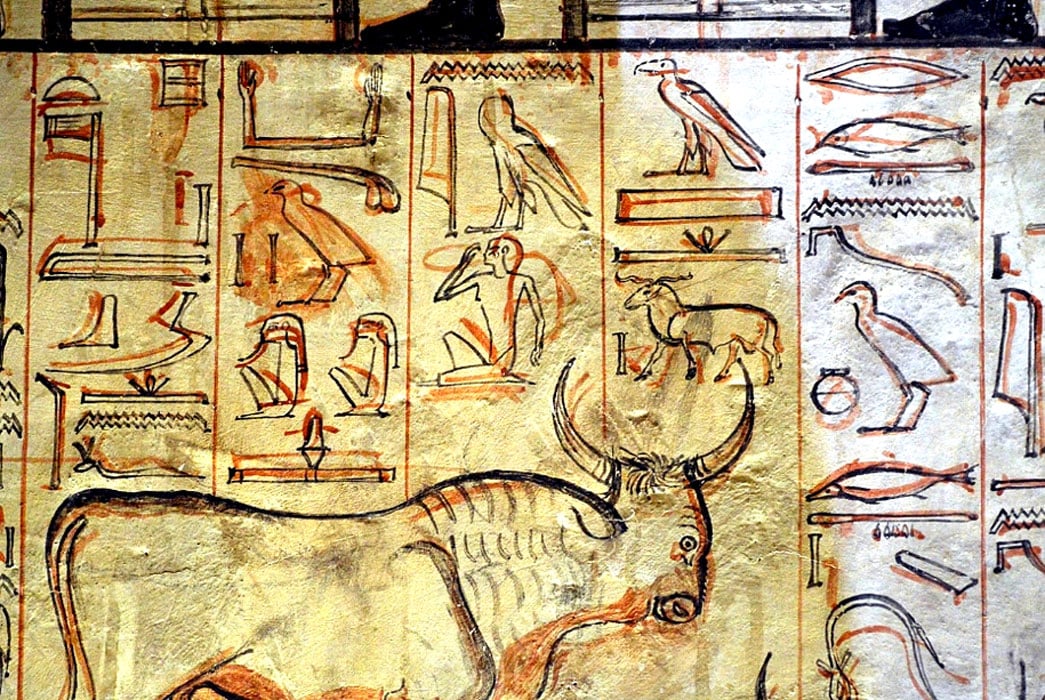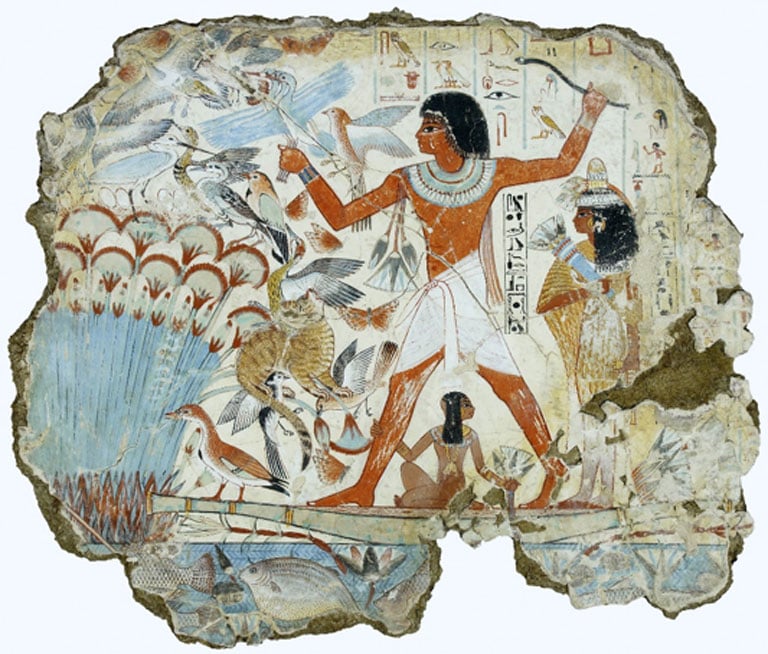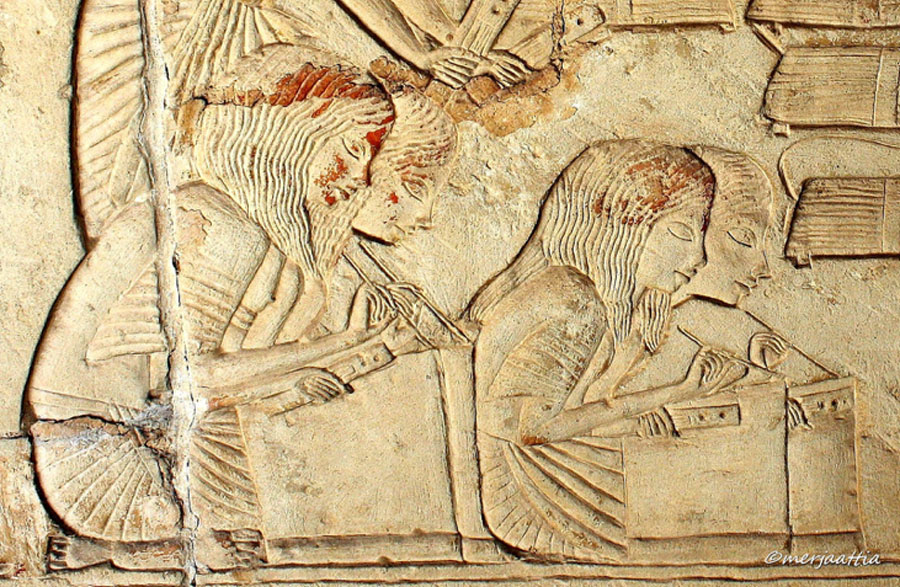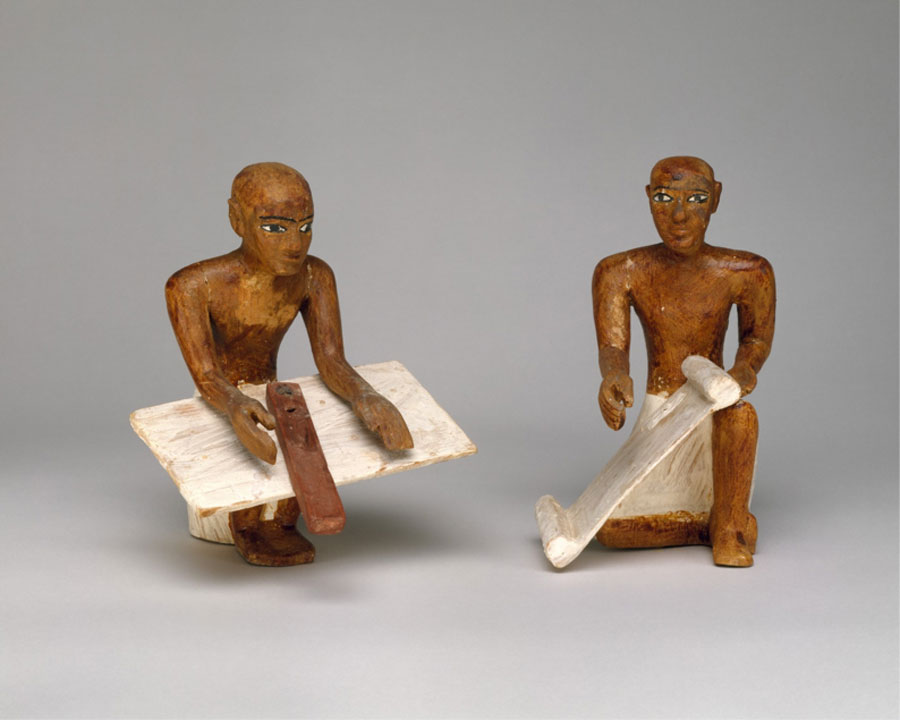
Scribes in Egypt: Brilliant Practitioners of the Outstanding Profession – Part II
Scribes were counted among the elite in ancient Egypt and led charmed, yet challenging, lives. They influenced virtually every sphere of the public and private affairs of the citizenry to an astounding degree. Be it the Pharaoh or lay person - everyone needed the services of scribes. This catapulted their lot into a different league altogether; one that would bring them great acclaim and accolades, and even controversy at times. Scribes mostly rendered their services in the royal court, temples and administrative offices. However, their other noteworthy achievements were the result of collaborating with workers in departments such as the army, and the vast numbers of artisans and architects.

Nebamun, a middle-ranking official ‘scribe and grain accountant’ during the New Kingdom is shown hunting in the marshes, in a scene from his tomb-chapel. His name was translated as ‘My Lord is Amun’, and his association with the temple, coupled with the importance of grain supplies to Egypt, meant that he was a person of considerable practical importance. British Museum.
Did Women Serve as Scribes?
Due to the general lack of representations of women with scribal tools such as the palette and brush/pen in art; a general misconception prevails that ladies in ancient Egypt were unlettered. This is far from the truth, as in no way does it imply that women did not learn to read and write. Gaining literacy and being a scribe are two different things. For example, we know that Queen Tiye had her own library; but, was she a ‘scribe’ in the literal sense? Those women who were literate usually served in the medical profession - writing or translating texts pertaining to that field. It is also a certainty that many of the temple priestesses were highly-educated women.

On the Southern Part of the East Wall of Horemheb’s Saqqaran tomb, military scribes, magnificently represented, scrupulously record the details of long files of prisoners escorted by Egyptian soldiers (not in pic). This depiction is often speculated to represent women scribes.
Egyptological researcher, Gitta Warnemünde, informed the present writer: “Hellmut Brunner writes that there was one female scribe ‘in the entourage of a queen of the 13th Dynasty’ and another one from the 26th Dynasty as an official to a God’s Wife of Amun. Erika Feucht informs us in her publication Die Stellung der Frau im Alten Ägypten (1989), that there were ‘several’ female writers in the 11th and 12th Dynasties and one from the 26th Dynasty as an officer to the woman ruler Nitocris I, probably the same lady as Brunner mentioned. Concurring with these details, Egyptological scholar, Noha Khaled, states: “There is no doubt that women scribes were active in ancient Egypt... but they were much lesser in number in comparison to their male counterparts; which may explain their lack of prominence in artistic depictions.”

Two scribes from Meketre's Model Granary. Middle Kingdom, 12th Dynasty. Early reign of Amenemhat I. Wood, plaster, paint, linen. Southern Asasif, Tomb of Meketre (TT 280, MMA 1101), serdab, MMA excavations, (1920) Metropolitan Museum of Art, New York.




